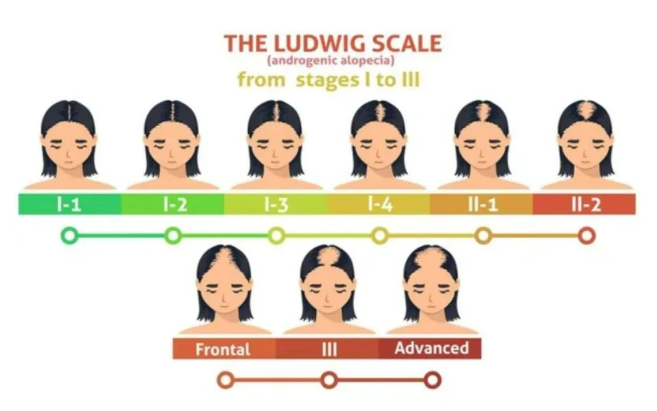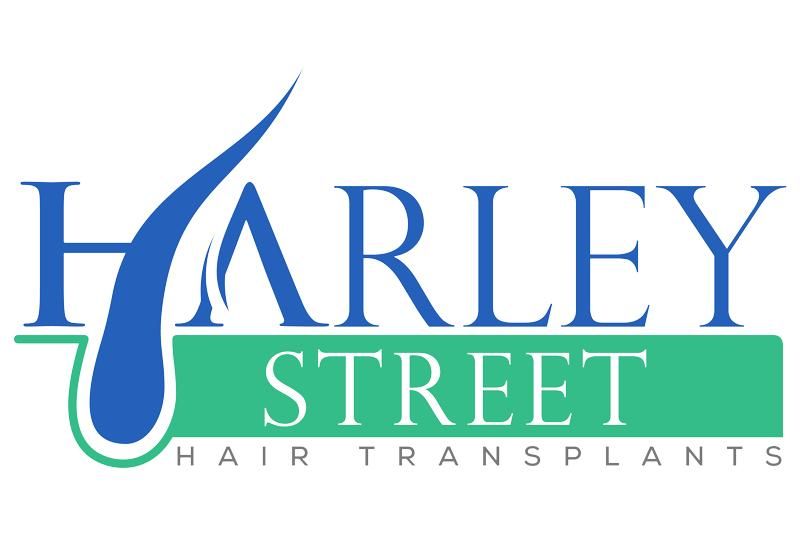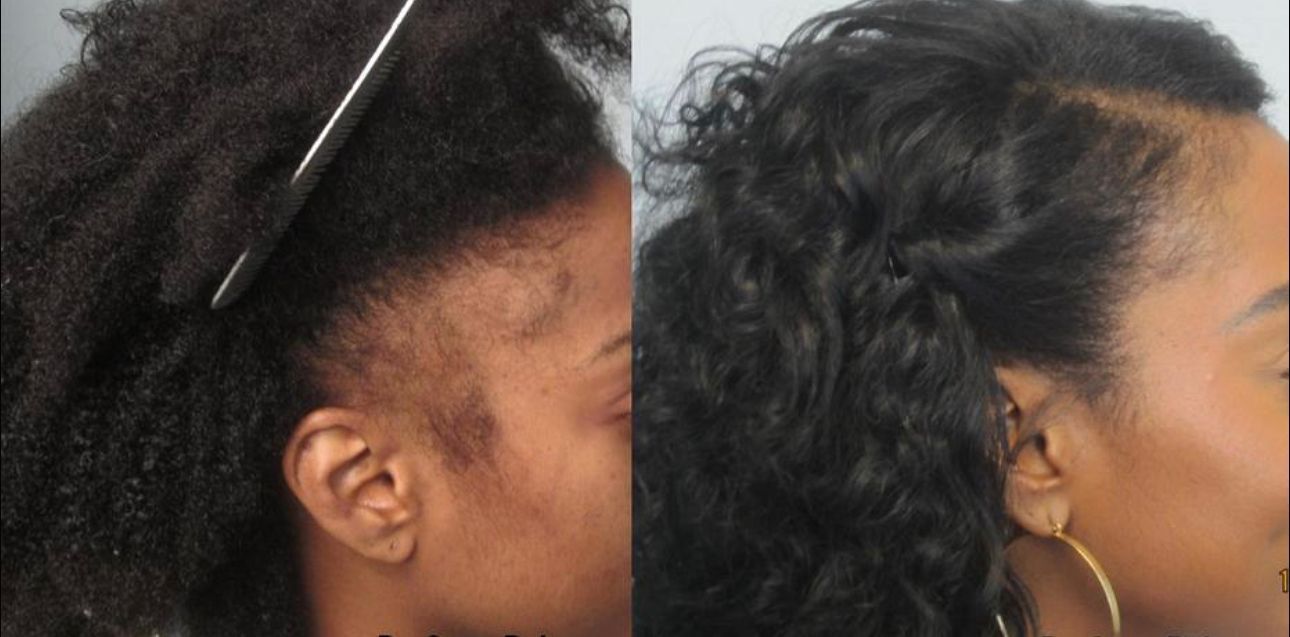Female Hair Transplants in Edinburgh
At Harley Street Hair Transplant Edinburgh, we understand that hair loss can affect both men and women, and we are committed to providing effective solutions tailored to each individual's unique needs. Female hair transplants have gained increasing popularity as a reliable method for restoring hair density and regaining confidence. Our skilled team of experts is dedicated to delivering exceptional results with the utmost care and professionalism.
Why choose us for a female hair transplant?
At Harley Street Hair Transplant Edinburgh, we are renowned for our specialism in performing female hair transplants. Here are just some the reasons our patients choose us:
- Expertise and Experience: Our team consists of highly skilled surgeons and technicians who specialize in female hair restoration. With years of experience and expertise, they understand the specific challenges and considerations associated with female hair loss, ensuring a personalized and effective approach to each patient.
- Individualised Treatment Plans: We recognize that every woman's hair loss is unique, and a one-size-fits-all approach doesn't yield optimal results. Our experts take the time to assess each patient's hair loss pattern, hair type, and goals to develop a customized treatment plan that addresses their specific needs.
- Advanced Techniques: At Harley Street Hair Transplant Edinburgh, we stay at the forefront of technological advancements in hair restoration. We utilize the latest techniques and tools, such as Follicular Unit Extraction (FUE), to ensure minimal scarring, natural-looking results, and faster recovery times.
- Natural-Looking Results: Our primary goal is to provide natural-looking results that seamlessly blend with existing hair. Our skilled surgeons meticulously extract and transplant individual hair follicles to create a hairline that is indistinguishable from the patient's original hair pattern.
- Comfortable and Discreet Environment: We prioritize our patients' comfort and privacy throughout the entire hair transplant process. Our clinic in Edinburgh offers a welcoming and discreet environment where patients can feel at ease during their consultations, procedures, and follow-up visits.
- Comprehensive Aftercare: We believe that the journey doesn't end with the procedure. Our team provides comprehensive aftercare instructions and ongoing support to ensure optimal healing and long-term success. We are dedicated to assisting our patients at every step of their hair restoration journey.
If you are a woman experiencing hair loss and looking for a reliable and reputable hair transplant provider, Harley Street Hair Transplant Edinburgh is here to help. Contact our clinic to schedule a consultation with our experienced team. We will assess your unique needs, answer your questions, and guide you towards the most suitable hair restoration solution tailored to your goals. Regain your confidence and embrace a fuller head of hair with our exceptional female hair transplant services.
Our range of female hair transplants?
FUE
For women facing hair loss or thinning, Follicular Unit Extraction (FUE) presents a viable hair transplant technique. This procedure involves delicately extracting individual hair follicles from the donor area of the scalp and subsequently transplanting them to the areas affected by hair loss or thinning. FUE is a minimally invasive procedure that offers several advantages, including the absence of a linear scar, which makes it particularly appealing for women who prefer shorter hairstyles. Whether aiming to restore overall hair density or specifically address thinning areas, FUE provides a versatile solution for women seeking effective hair restoration.
FUT
Follicular Unit Transplantation (FUT) is a technique used in hair transplantation that can be advantageous for women experiencing hair loss or thinning. This procedure involves extracting a strip of skin from the hair-bearing donor area on the scalp. The strip is then divided into individual follicular units, which are subsequently transplanted to the areas affected by hair loss or thinning. Although FUT can effectively restore hair, it does result in a linear scar that may be visible if the hair is kept short. FUT is commonly employed to enhance hair density in larger scalp regions and can be combined with other hair restoration methods for optimal outcomes.
Non Surgical Hair Loss Treatments
Hair restoration treatments that do not require surgery can be advantageous for women facing hair loss or thinning. This approach entails the injection of a concentrated solution containing the patient's own platelets into the scalp. These platelets contain growth factors that encourage hair growth. The treatment is effective in stimulating hair growth in thinning areas and enhancing the overall quality and texture of the hair. Non-surgical hair loss treatment is a minimally invasive procedure that usually involves no downtime. It can be utilized as a standalone treatment or in conjunction with other hair restoration techniques to achieve the best possible results.
Eyebrow Hair Transplants
For women experiencing hair loss or thinning in their eyebrows, eyebrow hair transplants offer a beneficial solution. This procedure entails the transplantation of hair follicles from the scalp's donor area to the eyebrows, resulting in fuller and naturally appearing eyebrows. Our eyebrow hair transplants are personalized to cater to the unique requirements and objectives of each patient, providing long-lasting results. It is crucial to collaborate with one of our skilled and experienced hair transplant surgeons to achieve the optimal outcome while minimizing the likelihood of complications.
Afro Hair Transplants
Our experienced hair loss surgeons specialise in working with individuals who have afro-textured hair. Female afro hair transplants involve transferring hair follicles from the donor area, typically located at the back or sides of the scalp, to the recipient area, often found at the front or top of the scalp. This procedure aims to enhance hair density and address hair loss concerns. Performing afro hair transplants necessitates specific skills and techniques to ensure the successful transplantation of the thick, curly hair that is characteristic of afro-textured hair.
Planning for a Hair Transplant?
Planning for a hair transplant is an important step towards achieving your desired look. Before undergoing the procedure, it is important to consult with a qualified hair transplant surgeon to discuss your expectations, assess your suitability for the procedure, and create a personalised treatment plan. Our surgeons will evaluate your hair loss pattern, hair density, and donor area to determine the number of hair grafts needed and the best technique for your individual needs. Additionally, we will provide you with pre-operative instructions, such as avoiding blood-thinning medication and smoking, and post-operative care instructions to ensure a smooth recovery. It is important to follow these instructions carefully to optimise the success of the hair transplant procedure. With careful planning and the guidance of our skilled hair transplant surgeons, you can achieve natural-looking and long-lasting results from your hair transplant procedure.
Book Your
Free Consultation Today
Contact Us
Our range of
Hair Loss Treatments
Patient Care Is Our Leading Priority

Follicular Unit Extraction (FUE)
FUE is a minimally invasive procedure that does not require a large incision or stitches, resulting in minimal scarring and a faster recovery time.

Follicular Unit Transplantation (FUT)
FUT can be an effective hair restoration option for patients with larger areas of baldness or those who require a higher number of grafts.

Non Surgical Hair Loss Treatment
Non-surgical hair restoration treatment makes use of the patient's own blood to promote hair growth.

Eyebrow Hair Transplants
Eyebrow hair transplants are a specialised hair restoration procedure that involves transplanting hair follicles from the scalp to the eyebrows.

Beard Hair Transplants
Beard hair transplants are a specialized hair restoration procedure that involves transplanting hair follicles from the scalp or other areas of the body to the beard area.

Female Hair Transplants
Female hair transplants are a specialized hair restoration procedure that involves transplanting hair follicles to the areas of thinning or balding hair in women.
FEMALE HAIR TRANSPLANTS IN EDINBURGH
What are the advantages of a female hair transplant?
For women experiencing hair loss, it can be a distressing time. With so much information and over the counter products available, it can be difficult to know which treatment to opt for. Female hair transplants offer several advantages for women experiencing hair loss or thinning. Some of the key advantages include:
- Improved Hair Density: Hair transplants can effectively restore hair density by transplanting healthy hair follicles to areas of thinning or baldness. This results in fuller and thicker hair, enhancing the overall appearance.
- Natural-Looking Results: Advanced techniques in hair transplantation, such as Follicular Unit Extraction (FUE) or Follicular Unit Transplantation (FUT), allow for the precise placement of individual hair follicles, resulting in natural-looking results. The transplanted hair blends seamlessly with existing hair, making it virtually indistinguishable.
- Permanent Solution: Hair transplants offer a permanent solution to hair loss. The transplanted hair follicles are typically resistant to the effects of pattern baldness or thinning, making them a long-lasting solution.
- Increased Self-Confidence: Hair loss can significantly impact a person's self-esteem and confidence. By restoring hair density and improving the overall appearance, female hair transplants can help women regain their self-confidence and feel more positive about their appearance.
- Customised Approach: Each female hair transplant is tailored to meet the individual needs and goals of the patient. The procedure takes into account factors such as hair type, hairline design, and desired outcomes, ensuring a personalized approach to achieve the best possible results.
- Minimally Invasive: Modern hair transplant techniques, such as FUE, are minimally invasive procedures that involve small incisions or extraction of individual hair follicles. This results in minimal scarring and a quicker recovery time compared to traditional surgical methods.
- Compatibility with Styling: Transplanted hair can be styled, cut, and treated just like natural hair. Women can enjoy the freedom to experiment with different hairstyles, including wearing their hair short, long, or in various updos, without any limitations.
It is important to consult with a qualified and experienced hair transplant specialist to assess individual suitability and discuss specific advantages based on the unique circumstances.
What is female pattern baldness?
Female pattern baldness, also known as female pattern hair loss or androgenetic alopecia, is a common form of hair loss that affects women. It is characterised by a gradual thinning of hair on the top of the scalp, particularly around the crown and frontal areas, resulting in a widening part or visible scalp. Unlike male pattern baldness, which often leads to complete baldness in specific areas, female pattern baldness typically causes diffuse hair thinning without significant receding of the hairline.
The exact cause of female pattern baldness is not fully understood, but it is believed to be influenced by a combination of genetic factors and hormonal imbalances. The role of androgens, particularly dihydrotestosterone (DHT), in the development of female pattern baldness is still being studied.
Female pattern baldness can start at any age but is more commonly observed after menopause. Other contributing factors may include age, family history of hair loss, hormonal changes (such as pregnancy or certain medical conditions), and certain medications. The progression of female pattern baldness can vary among individuals. Some women may experience mild hair thinning, while others may develop more noticeable hair loss. The condition can have a significant impact on a woman's self-esteem and quality of life.
There is currently no known cure for female pattern baldness, however modern hair transplant techniques are one of the most effective ways to to to slow down the progression of hair loss and promote hair regrowth.
If you are suffering from female hair loss it is recommended to speak with one of our hair transplant specialists who can provide a proper diagnosis, assess the underlying causes, and recommend appropriate treatment options based on your individual needs and circumstances.

What results to expect from DHI?
It generally takes around 3 to 4 months to start seeing new hair growth after a DHI hair transplant procedure. However, it can take up to a year to see the full results of the transplant, as the transplanted hair gradually thickens and matures over time. The rate of hair growth may also vary depending on the individual's natural hair growth cycle and overall health.
Several factors can affect the rate of hair growth after a DHI hair transplant. These include:
- Patient’s Age: Younger patients generally have faster hair growth rates than older patients.
- Patient’s Health: The overall health of the patient can affect hair growth. Patients who are in good health are likely to see faster hair growth than those who are not.
- Hair Characteristics: The texture, color, and thickness of the patient’s hair can affect the rate of hair growth. Curly or coarse hair may take longer to grow than straight hair.
- Genetics: Genetics can play a role in hair growth rate. Patients with a family history of slow hair growth may also experience slower hair growth after a DHI hair transplant.
- Aftercare: Proper aftercare can promote hair growth. Patients who follow their surgeon’s post-operative instructions and take care of their hair transplant are more likely to see faster and better results.
It is important to note that hair growth after a DHI hair transplant is a gradual process, and it may take up to 12-18 months to see full results.
Why choose us for your DHI hair transplant?
As a leading hair transplant clinic in Edinburgh, we are dedicated to providing top-quality DHI hair transplants with a focus on personalized care and attention to detail. Here are some reasons why you should choose us for your DHI hair transplant:
- Experienced and skilled team: Our team of surgeons and technicians are highly trained and experienced in DHI hair transplant techniques. They have performed numerous successful procedures, and are committed to providing excellent results.
- State-of-the-art facilities: We use the latest equipment and technology in our clinic to ensure that our patients receive the best possible care. Our facilities are designed to provide a comfortable and safe environment for our patients.
- Personalised approach: We understand that every patient is unique, and we tailor our approach to meet your individual needs. Our team takes the time to understand your goals and concerns, and develops a treatment plan that is customized for you.
- Transparent pricing: We believe in transparency when it comes to pricing, and we provide clear and upfront costs for our services. We also offer financing options to make our services more accessible to everyone.
- Comprehensive aftercare: We provide comprehensive aftercare services to ensure that you have a smooth and comfortable recovery. Our team is available to answer any questions or concerns you may have, and we provide detailed instructions on how to care for your newly transplanted hair.
At Harley Street hair transplant Edinburgh, we are committed to providing exceptional DHI hair transplant services that meet the highest standards of quality and care, contact us today for a free consultation.
Popular Questions
Got a question for our Edinburgh hair transplant team? We’re here to help.






